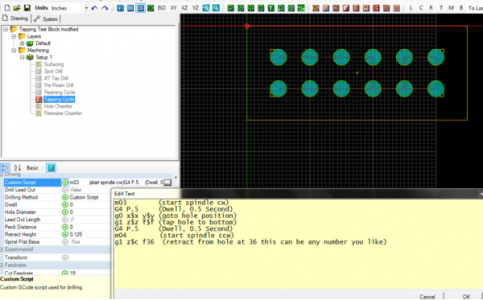That looks great. I guess this is hand coded
Today I tapped 135 1/4-20 holes in about 22 minutes. Hand coding this would have taken way too long and tested my patience. I use CamBam for generating gcode. With the help of another CamBam user I used a custom script he provided. I tweaked it a bit to suit my mill characteristics then generated the gcode file.
Here'a screen shot of a test piece I created and the script. I removed the dwell before the M4 command and changed the feedrate to suit my spindle RPM and thread pitch.

